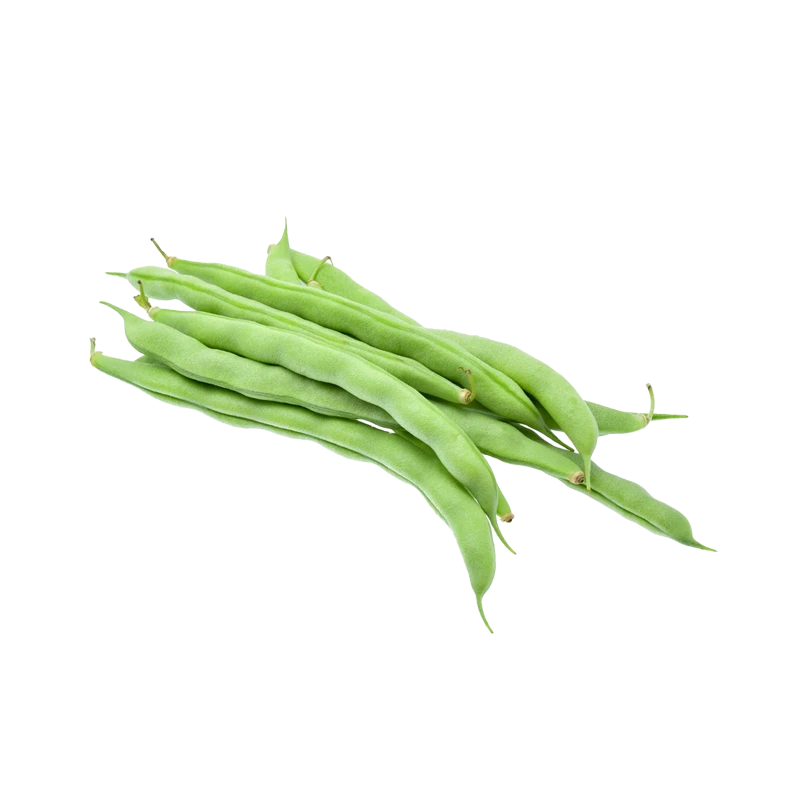Green Beans — Nutrients, Health Benefits, And Shopping Tips

Written by Listonic Team
Last update on September 4, 2024
Nutrition facts
Nutrition facts
Amount per 100 g
Calories
🔥 31 kcal
| Nutrition per: 100 g | Value | % Daily Value* |
|---|---|---|
| Carbs | 7 g | 2.55% |
| Fiber | 3 g | 10.71% |
| Sugars | 1 g | 2% |
| Glycemic Index | 15 | - |
| Protein | 2 g | 4% |
| Sodium | 6 mg | 0.26% |
| Total Fat | 0 g | - |
*The % of Daily Value (DV) tells you how much a nutrient in a serving of food contributes to a daily diet. 2,000 calories a day is used for general nutrition advice.
31
🍏 Low-Calorie Foods
15
🟢 Low Glycemic Index
Did you know?
Health benefits
- High in fiber, promoting digestive health, regular bowel movements, and a healthy gut microbiome.
- Rich in vitamins and minerals such as Vitamin C, Vitamin K, and folate, which support overall health and well-being.
- Contains antioxidants, which help protect the body from free radicals and reduce inflammation.
- Low in calories, making them a nutritious option for weight management and overall health.
Health risks
- Potential for digestive discomfort such as gas or bloating when consumed in large quantities due to their high fiber content.
- Risk of pesticide residue on conventionally grown green beans, which can pose health risks if not properly washed or sourced from organic suppliers.
- Allergic reactions in some individuals, causing symptoms like itching, swelling, or difficulty breathing, though rare.
- Potential nutrient loss when green beans are overcooked, reducing the levels of vitamins and minerals.
How to choose green beans
Green beans should snap crisply when bent and have a vibrant green color. They should feel firm to the touch and not limp. The pods should be free from blemishes and bruises.
Avoid green beans that are tough, have brown spots, or are overly fibrous. Fresh green beans should cook up tender-crisp, maintaining their bright color and sweet flavor.

How to store green beans
Green beans are best stored in the refrigerator's crisper drawer. Placing them in a plastic bag helps maintain their freshness by retaining moisture. Properly stored, green beans can last up to a week.
Storing green beans improperly can cause them to become limp and lose their flavor. Avoid washing them before storage to prevent unnecessary moisture. Keeping them cool and sealed ensures they retain their crispness and nutritional value, making them a perfect addition to your meals.
✅ Extra Tip
How long do they last?
Green beans can last for 1-2 weeks in the refrigerator when stored in a plastic bag or container. For longer storage, green beans can be blanched and frozen, lasting up to 12 months.
What to do with leftovers?
Leftover green beans can be used in a variety of dishes, both as a side or main ingredient. Sauté them with garlic and olive oil for a quick and flavorful side dish, or mix them into a stir-fry with other vegetables and your choice of protein. Green beans are also great in casseroles, where they can be combined with creamy sauces and topped with breadcrumbs or fried onions.
Use green beans in a salad with tomatoes, onions, and a vinaigrette for a fresh and crunchy dish, or add them to a pasta dish with a light sauce for added texture. If you have a lot of green beans, consider making a batch of green bean almondine, sautéed with butter and toasted almonds. Green beans can also be added to soups or stews for extra nutrition, or roasted in the oven with olive oil and herbs for a caramelized flavor. For a quick snack, dip steamed green beans in your favorite sauce or hummus.
👨⚕️️ Medical disclaimer
Discover products from other categories
Listonic Team
Fact-checked
Our editorial team checked this article to make sure it was accurate at the time of publishing it.
Get the top-rated shopping list app on your phone!







